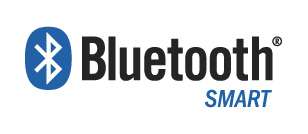Bluetooth gets smart

You may know Bluetooth as the wireless technology you use to connect your phone with your wireless headset or your car's hands-free speaker systems. But in the near future, you may use the wireless technology to do a lot more than that.
Dubbed Bluetooth Smart, the new version of the technology is already being used in fitness devices, including Fitbit's Force and Nike's latest FuelBand, to help track users' physical activity. The technology is at the heart of AirDrop, a feature included in the latest version of Apple's iOS operating system that allows iPhone and iPad users to transfer photos and other files to nearby users of other Apple handhelds. And an upcoming deadbolt lock from Kwikset uses the technology to allow owners to unlock their doors with a simple touch, rather than a key.
The technology will soon be available in a range of health monitoring devices, such as a blood glucose sensor developed by Johnson & Johnson. It also may be used soon to allow users to make wireless payments at their local coffee shop or for retailers to identify frequent customers and send them targeted ads. And Bluetooth proponents think it will be a key part of the "smart home" of the future, helping consumers control everything from their TVs to their thermostats.
The new technology "changes the perception of Bluetooth and what it can be used for," said Mark Hung, an analyst who covers wireless technologies for Gartner, an industry research group.
In some ways, the new version of Bluetooth is a "back to the future" moment for the technology.
When Bluetooth was first being developed nearly 20 years ago, technology experts thought it would be used for a lot more than headsets. In fact, Bluetooth was initially pitched as a technology for "personal area networks." These were envisioned as a collection of devices worn by or positioned near an individual who could interact with them through a phone or a Palm Pilot-style personal digital assistant.
But that vision never materialized. While Bluetooth is commonly used to connect wireless keyboards and mice to PCs, and has started to be used more frequently to connect phones to portable speaker systems, it's mostly been used just for hands-free devices.
That's starting to change thanks to the updated technology, which is part of what's more broadly called Bluetooth 4.0.
The key innovation with Bluetooth Smart is that it uses very little energy. The new technology allows devices to run for weeks without needing a recharge and to send bursts of data while consuming very little power.
That makes it a good fit for health and fitness devices. Bluetooth Smart serves as a conduit that takes data collected from sensors either in the phone or in the fitness accessories and transfers it to apps on the phone where the data can be processed. The first examples of these are the fitness bands. But soon to come are soccer balls and basketballs that have sensors and Bluetooth Smart radios built into them to help athletes track how they are shooting, kicking or dribbling and suggest ways to improve.
Part of what's driving Bluetooth Smart into new uses is that it's gained wide support among computer platforms. Apple integrated the technology into iOS two years ago. Microsoft built support for it into Windows 8, which the company released last year. And this summer, Google added support for Bluetooth Smart to Android.
In addition to health and fitness uses, Bluetooth Smart is also starting to be used as an invisible beacon. When an iPhone makes an AirDrop file transfer, it uses Bluetooth Smart to find other nearby devices and to create secure one-to-one connection. Similarly, the Bluetooth signal can be used to identify an individual phone user for the purpose of making a payment or sending a marketing message.
While other technologies can and are being used for wireless payments - most notably NFC, or near field communication, radios - the advantage of Bluetooth is that it's already in nearly every phone. By contrast, NFC is less widely supported and isn't used in Apple devices at all.
Bluetooth Smart could also have a future in the smart home. It's already being used in some remote controls, allowing users to change channels or turn on equipment even when it's hidden in cabinets, something they can't do with old-style infrared remotes. And the Kwikset lock could trigger a wave of broader use of Bluetooth in home automation devices.
I haven't been a huge fan of Bluetooth in the past. In some cases, I haven't been able to get devices to connect using Bluetooth. In other cases, I've had to repeatedly re-pair formerly connected devices.
Suke Jawanda, the chief marketing officer at the Bluetooth industry's trade group, said that the widespread support for Bluetooth 4.0 at the operating system level should solve some of those problems.
I hope so, because of the new uses for Bluetooth sound pretty cool.
©2013 San Jose Mercury News (San Jose, Calif.)
Distributed by MCT Information Services



















